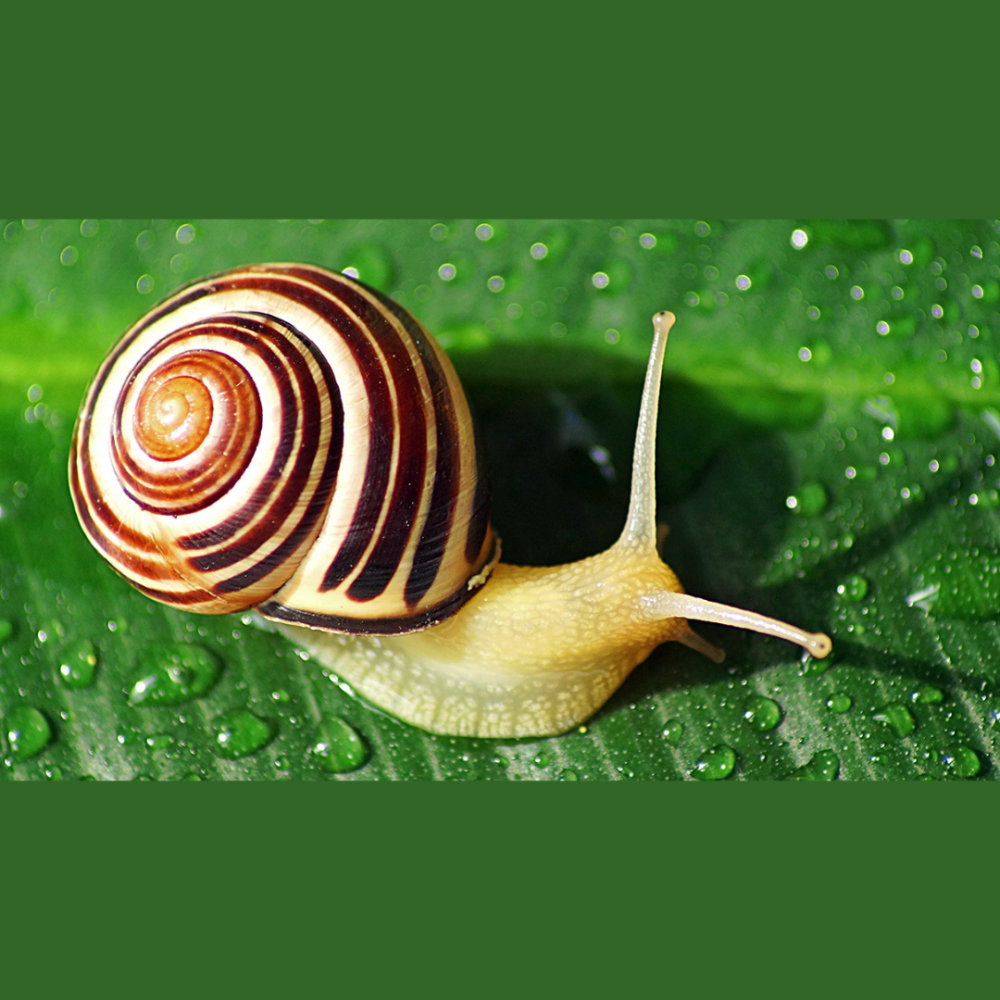
Learn how to control slugs and snails with these tips from the City of Goleta Environmental Services Division. Slugs and snails are small, slimy insects that are usually found outdoors in your garden. These insects have soft, oblong bodies and produce slime to help them move around. One of the main differences between slugs and snails is that snails have shells.
Did You Know?
- Snails were originally imported from France for culinary purposes.
- Slugs and snails are most active at night and on dark, cloudy days.
- Up to 100 small pearl-like eggs can be laid at a time.
What Can You Do?
Different methods can be used to remove slugs and snails such as hand-picking, creating barriers or traps, applying eco-friendly pesticides, and using insect predators. To prevent slugs and snails, purchase native plants with dry, hard leaves, avoid over-watering by using water-efficient devices, and try to water at the most efficient time to not only allow areas to dry out before nighttime, but to avoid evapotranspiration.
- Find and remove slug and snail eggs. Slug and snail eggs are usually found in the soil about an inch down, but can also be found under rocks, boards, or plant debris. Make sure to crush the eggs or scoop them into a plastic bag, seal it, and throw it away.
- Make sure to thoroughly remove full grown slugs and snails. Crushing slugs and snails or drowning them in soapy water will reduce the chances of them surviving.
- Bury crushed slugs and snails for soil nutrients. Burying crushed slugs and snails 3 to 4 inches underground can add nutrients to the soil and avoid flies.
- Time your hand-picking. Hand-pick eggs or full-grown slugs and snails with a flashlight and pair of gloves before dawn or after 10 pm. This is when slugs and snails come out to eat.
- Use a combination of methods and be persistent. Use two or more methods and make sure to regularly perform them to effectively reduce the number of slugs and snails.
- Use copper and coconut oil soap as a repellent. Slugs and snails are repelled by copper or coconut oil soap. Wrap the copper around an object, such as a flowerpot, or apply the soap around plants.
- Cover seedlings and vegetables. Rows of vegetable or seedlings can be covered such as with horticultural fabric or small cages.
- Use homemade or commercial traps. In addition to hand-picking, trap slugs and snails with a container or purchase commercial traps that use yeast mixtures to attract slugs and snails.
- Encourage natural predators. Let nature help you out. Some ground beetles that look like black, tank-like insects will eat slugs and snails.
- Use an iron phosphate bait. Be careful when using this method, some baits contain methiocarb which can kill beneficial insects, such as earthworms. Try to find baits with iron phosphate instead.
Find more information on controlling slugs and snails with eco-friendly products in our OWOW brochures in English and Spanish.
The City of Goleta along with the Cities of Buellton, Carpinteria, Solvang, Santa Barbara, Santa Maria and the County of Santa Barbara have partnered with the OWOW organization to promote the use of less-toxic products in an effort to reduce pesticide pollution in our communities. By reducing pesticide use and the use of less-toxic products around the home, you can help reduce pesticides and other pollutants such as herbicides and fertilizers from being picked up while watering or when it rains and transported to the nearest storm drain inlet and into our waterways. The OWOW website is a great resource for finding less-toxic products to use around your home or garden.



